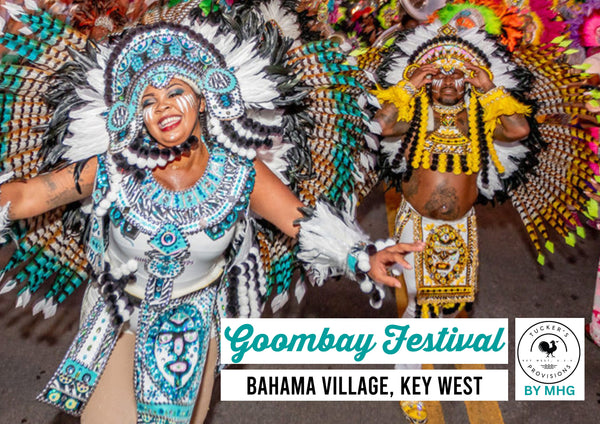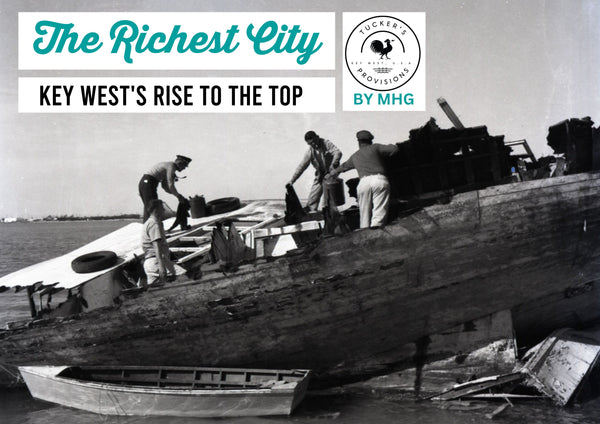A WORLD APART - How the Conch Republic came to be.

The Keys have a well-earned reputation as a rebel's paradise thanks to our long history of pirates, wreckers, and smugglers. Mix in notable figures like President Truman, John J. Audubon, and Ernest Hemingway and you've got a strong splash of nostalgia to top off the allure of this place.
Through the years, each generation of Keys locals; hippies - salty souls - live and let lives - and general "take no crap" kind of folks, have kept this reputation alive, while still embracing our unique culture and laid-back lifestyle.
It’s been said more than once, that in so many ways it feels like you’re a world apart when you're in the Keys. Nothing cemented this notion however, quite like that time we decided to become our own nation...
How it happened
Picture this: it's April 23rd, 1982, and the U.S. Federal Government placed a Border Patrol Roadblock at the Last Chance Saloon, in Florida City. Effectively blocking the only road in and out of the chain of islands
A seventeen mile traffic jam quickly ensued as border patrol agents stopped and checked every car coming in both directions, reportedly searching for illegal drugs and unreported immigrants.
Minutes turned into hours of waiting, and Keys residents were fuming.
This kind of outsider treatment from the Feds was not necessarily new. The Keys had long been a popular tourist destination, but many residents felt that they were being unfairly taxed and neglected by the state government in Tallahassee.
Media coverage on the unprecedented action of the Border Patrol, setting up this "border roadblock” within the United States, made its way around the world.

Why it happened
With the spotlight shining squarely on these happenings in the Keys, was too rich of an opportunity to pass up.
In response to the Federal Government treating the Keys like a foreign country, Key’s leadership at the time, Mayor Dennis Wardlow led the charge in declaring independence from the United States of America.

This was promptly followed by the formation of our own nation, the "Conch Republic". A name inspired by our sea slug mascot, of course - which is another story.
We even printed our own currency (which, unfortunately, isn't accepted anywhere outside of the Keys), and came up with a catchy slogan “We seceded where others have failed."
And of course no nation is complete without a flag, so we made one of those too. A remnant of the era, the Conch Republic flag with a yellow sun, blue water, and a giant pink conch shell in the center - obviously - is one you can still see proudly flying throughout the Keys to this day.

What resulted
Of course, the U.S. government wasn't too thrilled about the whole secession thing.
But instead of sending in the troops when Mayor Wardlow declared war on the United States, things took a rather diplomatic and hilarious turn, as he then immediately surrendered - but only in exchange for a crate of stale bread and a case of Budweiser. As one would.

The U.S. government accepted his surrender and obliged his exchange request. And most importantly, agreed to lift the checkpoint and allowed the Conch Republic to exist, albeit unofficially.
Despite its short-lived existence (the Conch Republic only lasted for a few days), the nation gained a lot of attention and support from around the world. This visibility provided some important leverage for the Keys, which had long been a neglected part of Florida, with few resources, and little political power.

Ultimately, the secession drew attention to the issues the Keys had long been facing, and gave a megaphone to the voices demanding change.
A lasting era
Looking back on the secession of the Conch Republic, it's a great example of how sometimes a little humor and creativity can go a long way, and be an effective tool in drawing attention to serious issues.
It's also a good reminder on the importance of speaking up for ourselves and our communities, even in the face of what can feel like long odds.
In the end, the secession of the Florida Keys may have been, perhaps mostly symbolic, but it also was a powerful statement of our resilience and wherewithal to swim against the tide when necessary.
So there you have it, folks: the story of how the Conch Republic came to be. A short-lived, little nation that made a big and lasting impact.
Who knows, maybe one of these days we'll decide to secede again…Pictures above provided by Monroe County Library Collection



Leave a comment
Comments will be approved before showing up.
Also in Blog

Our Connection to Hemingway

GOOMBAY FESTIVAL - Bahama Village, Key West

